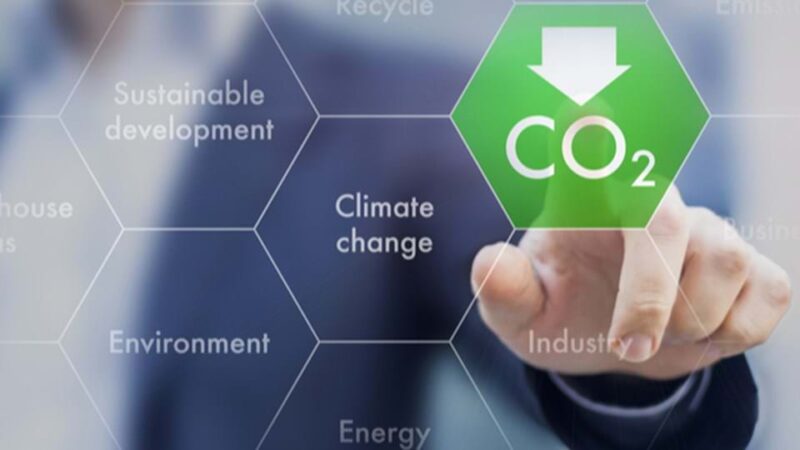BASF is on its way to net-zero emissions and is committed to the Scope 3.1 carbon reduction target. At an investor and analyst conference in Ludwigshafen, Germany, Dr. Martin Brudermüller, Chairman of the Executive Board of BASF SE, and Dr. Dirk Elvermann, Chief Financial Officer, reported on the progress of the implementation of the corporate strategy since its publication in 2018. They outlined how the corporate strategy is being implemented to achieve the priorities for the use of cash, while also proposing to improve the profitability of the business through differentiated management.
Delivering on Cash Use Priorities
BASF’s corporate strategy is based on endogenous growth, with around 60 percent of the company’s spending on capital expenditure and research and development between 2018 and 2022. Dr Müller noted that the BASF Group Executive Board places a high priority on shareholder returns and an attractive dividend. “BASF has increased its dividend in three of the last five years, and even in 2020 and 2022, when the external environment is unfavorable, the dividend has been maintained at the same level as the previous year,” he said. Since 2018, the company’s cumulative dividend payments have totaled €15.8 billion, with an average annual dividend yield of 5.6 %. BASF’s strong dividend over the past decade has been built on the company’s strong cash flow. cash flow from operating activities averages €7.7 billion per year and free cash flow an average of €3.4 billion per year over the period from 2013 to 2022. BASF actively manages its business portfolio to focus on innovative growth businesses, and over the past five years, the company has divested businesses with sales of €5 billion and acquired businesses with sales of €4 billion.
Managing the Business Differently to Improve Profitability
A key element of the corporate strategy presented in 2018 was to transform BASF into a customer-centric organization by empowering business units to better meet customer needs. Since then, BASF has taken steps to improve the management capabilities of its business units.
Dr Elvermann said that the company is taking a solid step forward in continuing to improve BASF’s competitiveness by adapting the management of its businesses. We will manage each business unit in a more differentiated way, combining the advantages of differentiated management, integrated business, and the organizational structure of an integrated company.
Through differentiated management, each business will further align its specific business model and processes while adapting the corresponding process structures, IT systems, and management framework. For businesses that are less integrated with the integrated businesses, the Company will provide them with more room for autonomy to better meet the needs of their client industries while maintaining their strengths as an integrated enterprise. This approach will be applied to the company’s Battery Materials and Coatings business units in the Surface Finishing Technologies business area, as well as to Agricultural Solutions.
BASF will continue to create value by managing the integrated businesses of Chemicals, Materials, Industrial Solutions, and Nutrition and care in a value chain-oriented manner, improving resource efficiency, integrating demand, and synchronizing and deeply integrating production. Going forward, value chain management will become even more important, with companies providing sustainable added value to their products in the form of product carbon footprints, biomass, or recycled content.
From January 2024, BASF will adopt new key performance indicators (KPIs) to guide the entire Group. In the short to medium term, the company will place greater emphasis on earnings before interest, taxes, depreciation, and amortization (EBITDA) and cash flow excluding exceptional items. At the same time, the company will continue to use return on capital employed (ROCE) as a medium-term management KPI, with an ongoing focus on asset profitability.
In line with differentiated management, BASF will introduce different KPIs for its business operating segments. For businesses focused on a single industry, BASF will be guided more strictly by the KPIs specific to that industry, while businesses that are more deeply integrated with integrated businesses will be managed along the value chain.
BASF will also align its external reporting and forecasting with the changes in management approach. The BASF Group Performance Report 2023 is expected to be published on 23 February 2024. Among other things, for the Group level, BASF will forecast earnings before interest, taxes, depreciation, amortization (EBITDA), and free cash flow excluding special items, and will no longer provide an outlook for sales, EBITDA excluding special items and return on capital employed (ROCE). In addition, at the business area level, the company will forecast EBITDA and cash flow excluding special items.
Continuing to Move Towards Net-Zero Emissions
BASF also updated investor representatives on its progress towards climate neutrality and pathways. For the first time in its 2018 corporate strategy, BASF set a goal to grow its business while ensuring that its CO2 emissions remain the same. in March 2021, BASF significantly increased this goal by setting specific emission reduction targets for Scope 1 and Scope 2: 25 percent reduction by 2030 compared to 2018, and net-zero emissions by 2050. To achieve this goal, BASF is focusing on the use of renewable energy and carbon-reducing technologies.
Our focus is on improving the carbon footprint of the products we sell, Dr. Brudermuller said, so we have set this specific target and calculated the carbon footprint in terms of carbon dioxide emissions per kilogram of BASF products. Our short – and long-term goals and efforts are clear: BASF will work with customers and suppliers to find economical, environmentally friendly, and practical solutions. Our long-term goal is also clear: we are committed to achieving scope 3.1 net zero emissions by 2050.
BASF has made progress in obtaining reliable raw emissions data related to the raw materials it purchases. Based on this, BASF believes it now has a strong enough basis to set a Scope 3.1 emissions reduction target. BASF’s latest target is to reduce Scope 3.1 carbon emissions from the relevant business portfolio by 15 percent by 2030 compared to 2022, i.e. from 1.57 kg to 1.34 kg of CO2 per kilogram of purchased raw materials.













Leave a comment